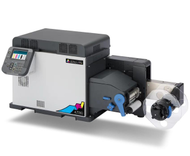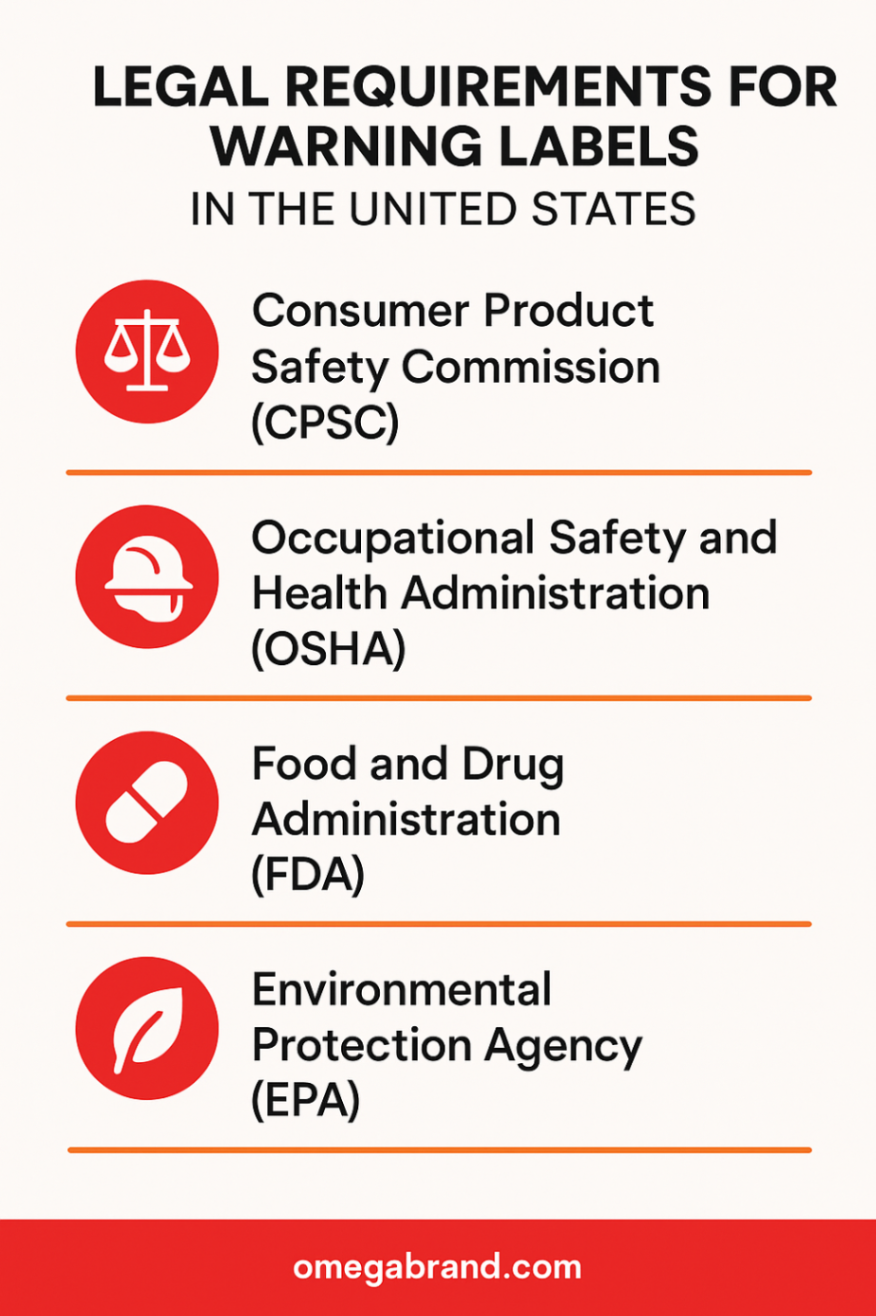How Product Warning Labels Protect You and Your Family?
11th Aug 2025
TL;DRProduct warning labels protect consumers from hazards like toxicity, choking, allergens, and flammability. They're required by agencies like CPSC, OSHA, FDA, and EPA in the U.S. depending on the product type. Labels include signal words, icons, usage instructions, and safety actions to prevent misuse or harm. If a warning label is missing or unclear, stop using the product and check the manufacturer’s site or report it to a regulatory agency. Top printers for compliant warning labels include: Brother TD-4750TNWBCS (thermal transfer, industrial durability) Afinia L502 (pigment ink, BS5609 compliance) Afinia LT5C (white toner for specialty labels) Primera LX4000 (high-resolution, long-lasting pigment labels) OmegaBrand offers compliant labels, printers, and expert support for OSHA, GHS, and FDA labeling standards. |
|---|
Ever noticed those bold product warning labels on cleaning supplies, cosmetics, or even toys? They’re not just legal formalities; they’re your first line of defense. These labels communicate potential risks, usage instructions, and safety precautions to help you make informed decisions and avoid harmful mistakes.
From allergen disclosures to chemical hazard symbols, product warning labels are designed to protect both consumers and manufacturers. In this guide, we’ll explore how these labels work, why they matter for everyday items, and what makes them essential for your family's safety, especially when it comes to products used around children, food, or your skin.
What is the Purpose and Importance of Product Warning Labels?
Product warning labels aren’t just regulatory checkboxes; they’re crucial tools that communicate real risks in a clear, visible way. Their main job? To prevent injury, illness, or misuse by giving consumers the facts they need before using a product.
Whether it’s a flammable cleaning spray, a choking hazard on a toy, or allergy information on food packaging, warning labels bridge the gap between manufacturers and end users. These labels help ensure that even if something goes wrong, the company has provided proper guidance, and consumers have the opportunity to avoid unnecessary harm.
In short, product warning labels protect everyone involved: you, your family, and the business that made the product.
What Hazards Are Commonly Addressed by Product Warning Labels?
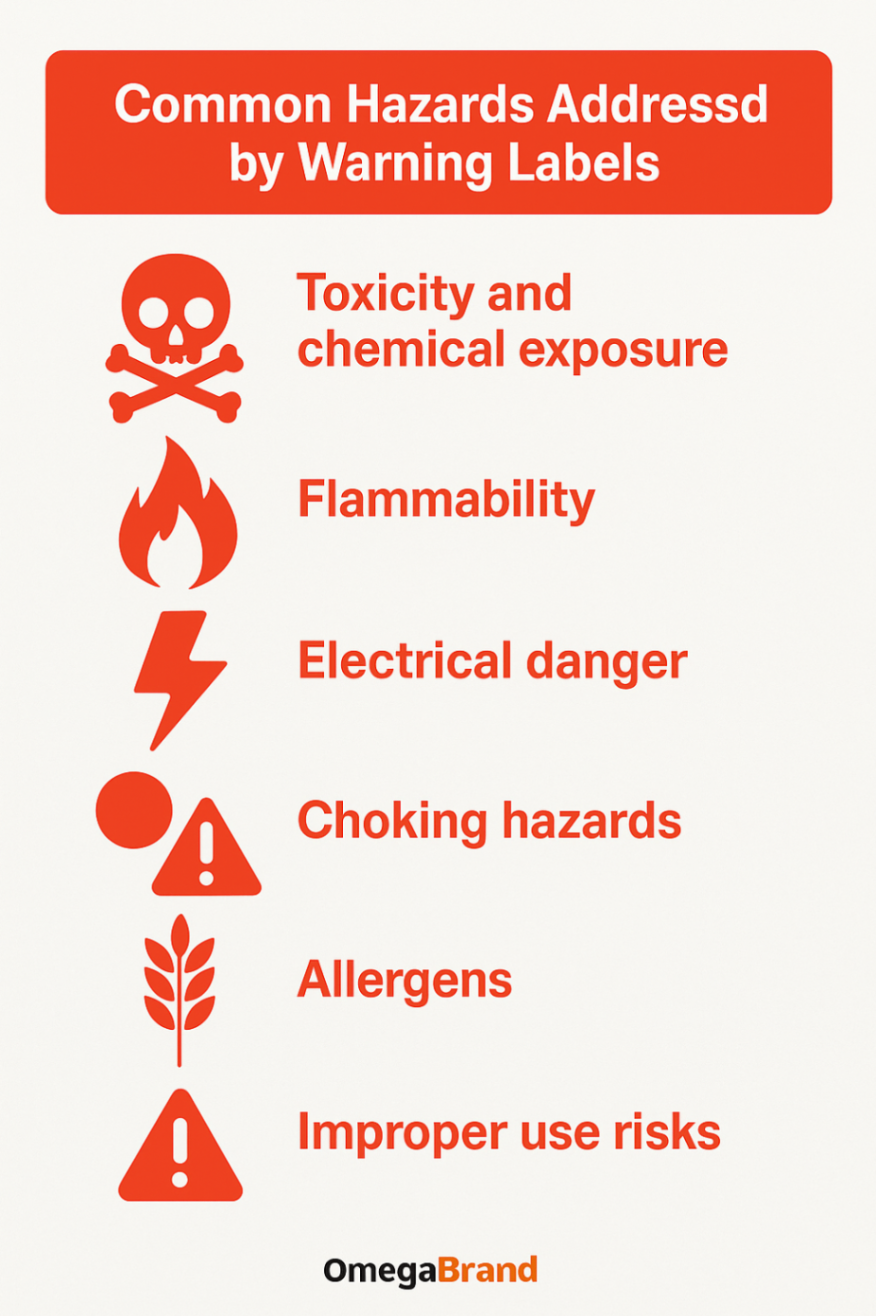
Product warning labels typically address a wide range of risks, depending on the type of product. Some of the most common hazards include:
-
Toxicity and chemical exposure – Often found on cleaning products, paints, adhesives, or batteries.
-
Flammability – Common with aerosols, alcohol-based products, and fuels.
-
Electrical danger – Seen on electronic appliances, chargers, and power tools.
-
Choking hazards – Usually on toys and packaging with small parts.
-
Allergens – Clearly indicated on food, cosmetics, and personal care products.
-
Improper use risks – For instance, “Do not ingest,” “Keep out of reach of children,” or “Use only in well-ventilated areas.”
These warnings allow consumers to use products as intended and take precautions when necessary.
What Are the Legal Requirements for Warning Labels in the United States?
In the United States, product warning labels are governed by a range of federal agencies depending on the product type. Some of the key legal frameworks include:
-
Consumer Product Safety Commission (CPSC) – Oversees warning labels on toys, electronics, and general household goods.
-
Occupational Safety and Health Administration (OSHA) – Regulates hazard communication for workplace products (e.g., chemical labels under the GHS system).
-
Food and Drug Administration (FDA) – Requires warnings for food, drugs, cosmetics, and supplements, including allergens and potential side effects.
-
Environmental Protection Agency (EPA) – Mandates labels for pesticides and environmentally hazardous materials.
To remain compliant, manufacturers must follow standardized formats for signal words (e.g., Danger, Warning, Caution), pictograms, and clear, readable font sizes. These standards help ensure that critical safety information isn’t buried in fine print and can be understood at a glance.
How to Read and Respond to Warning Labels Effectively?
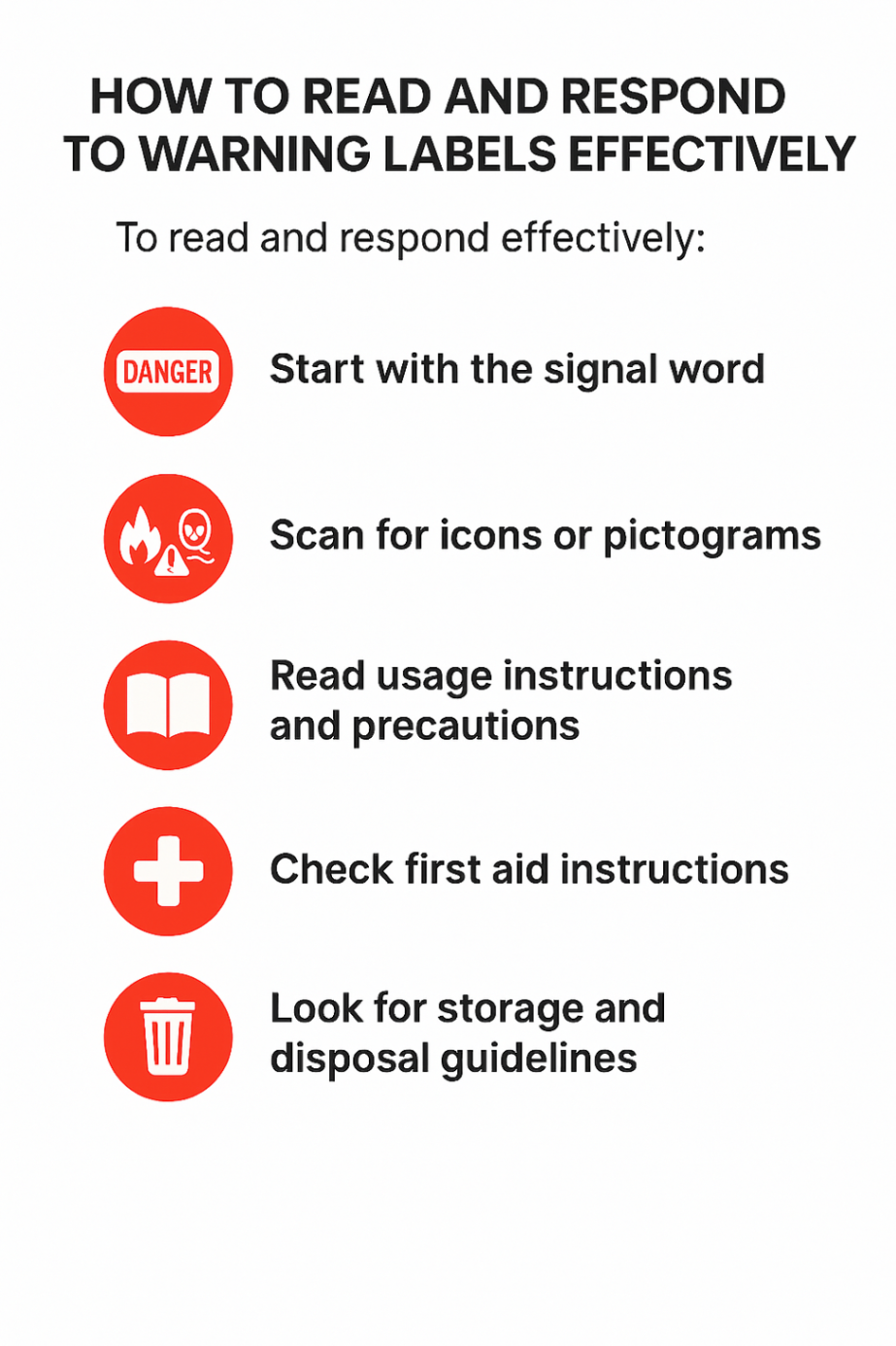
Reading product warning labels may not be exciting, but it’s one of the smartest things you can do before using a new item, especially if it involves chemicals, heat, electricity, or ingestion. These labels are carefully designed to deliver safety information quickly, often using standardized symbols, colors, and signal words like "Danger," "Warning," or "Caution."
To read and respond effectively:
-
Start with the signal word: This sets the severity level of the risk.
-
Scan for icons or pictograms: These are quick visual cues about hazards like flammability or toxicity.
-
Read usage instructions and precautions: This section tells you how to handle the product safely and what not to do (e.g., don’t mix with bleach, avoid contact with eyes).
-
Check first aid instructions: In case something goes wrong, this tells you what immediate steps to take.
-
Look for storage and disposal guidelines: Products like paint, batteries, or pesticides often need special handling.
Responding to product warning labels means following these instructions exactly, not improvising. It’s about respecting the label as part of the product, not an afterthought.
What to Do if a Warning Label Is Missing or Unclear?
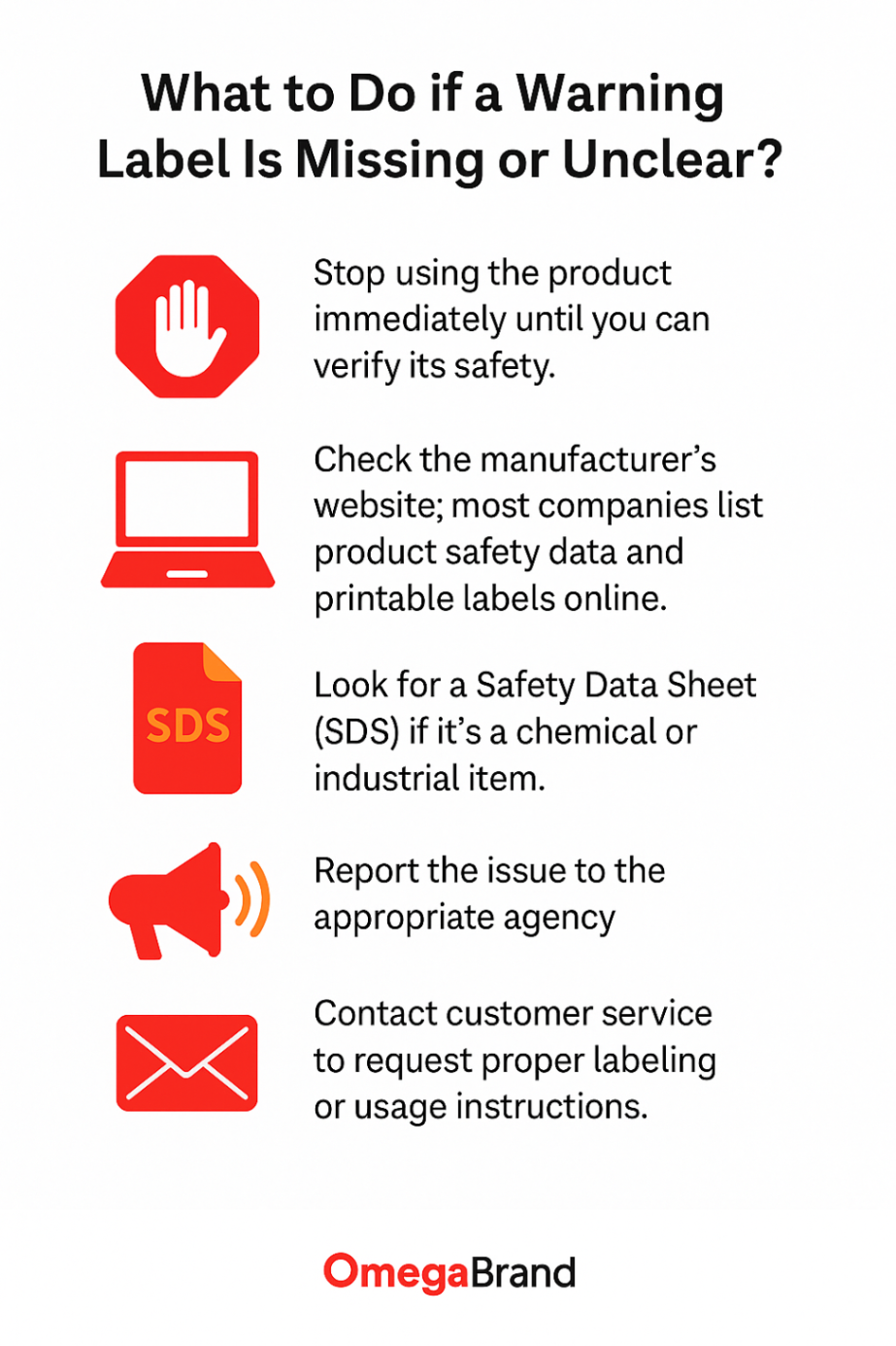
If a product warning label is missing, unreadable, or vague, that’s a serious red flag. Consumers have a right to understand what they’re using, and manufacturers are legally required to disclose hazards.
Here’s what you can do:
-
Stop using the product immediately until you can verify its safety.
-
Check the manufacturer's website; most companies list product safety data and printable labels online.
-
Look for a Safety Data Sheet (SDS) if it’s a chemical or industrial item.
-
Report the issue to the appropriate agency:
-
CPSC for general products
-
FDA for food, cosmetics, or medicine
-
EPA for pesticides or hazardous waste
-
-
Contact customer service to request proper labeling or usage instructions.
Recommended Printers for Creating Product Warning Labels
When it comes to producing product warning labels that are durable, legible, and compliant, your printer choice matters just as much as your label design. These labels often need to withstand moisture, abrasion, sunlight, or chemicals, and may need to follow strict regulatory standards like GHS (Globally Harmonized System) or BS5609.
Here’s a breakdown of four highly recommended printers that excel in creating high-quality product warning labels for industrial, retail, and regulatory applications.
1. Brother TD-4750TNWBCS 4", 300 dpi Thermal Transfer Safety Sign & Facility ID Label Printer With WiFi/Bluetooth
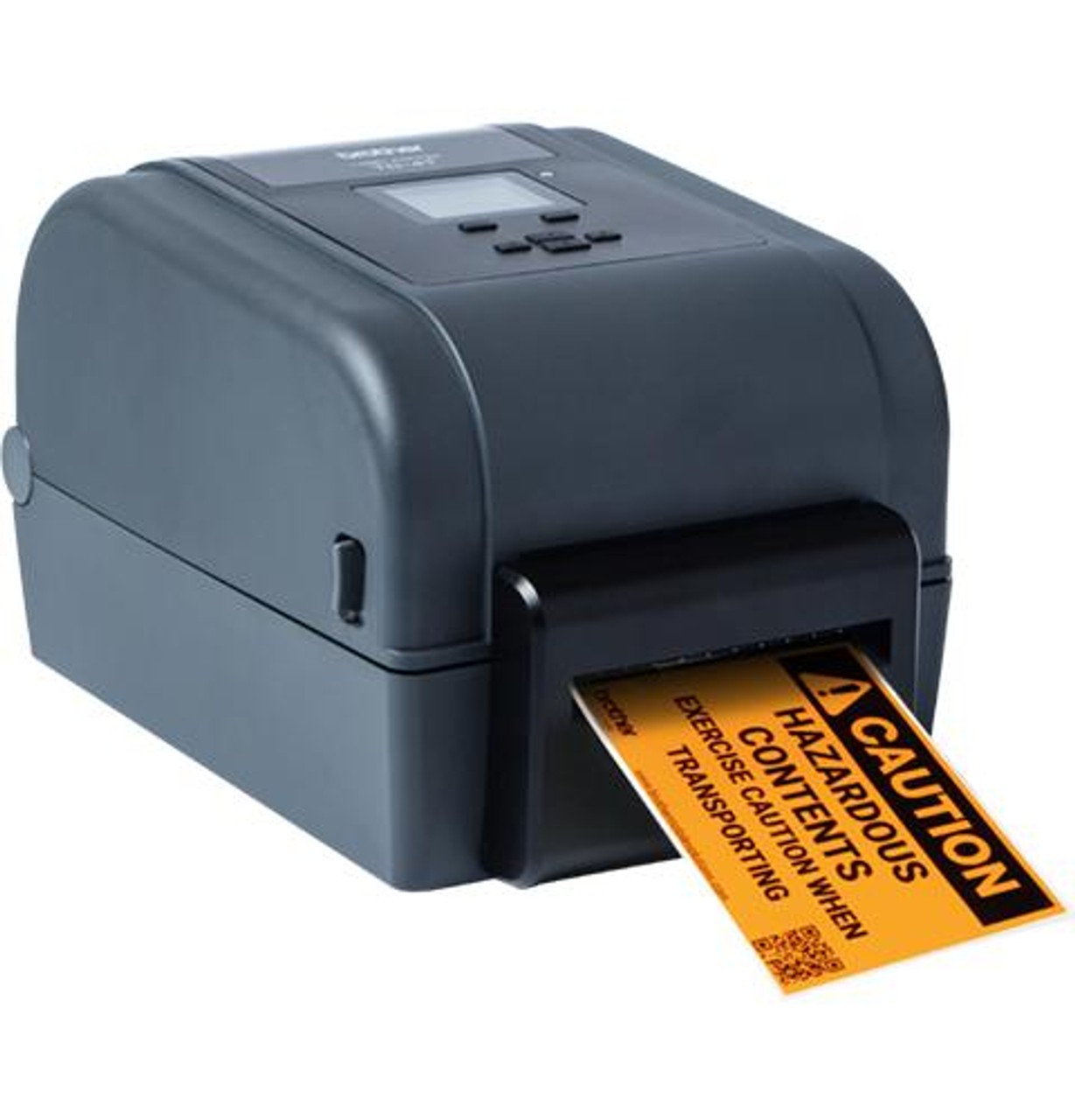
Best for: Industrial safety signage, GHS labels, and compliance labeling across warehouses and facilities.
The Brother TD-4750TNWBCS is built for precision, durability, and speed, key traits when printing product warning labels in environments where safety and compliance are top priorities. Unlike inkjet printers, this unit uses thermal transfer technology, making it perfect for printing long-lasting labels that don’t fade, even in harsh environments.
Key Technical Features:
-
Print Method: Thermal Transfer
-
Print Resolution: 300 dpi for sharp, scannable barcodes and text
-
Print Speed: 6 ips (inches per second)
-
Print Width: 4 inches
-
Connectivity: USB, LAN, Serial, Wi-Fi®, Bluetooth®
-
Display: Color LCD for more effortless operation
-
Included Software: LabelSuite™ for intuitive warning label design
Why It’s Ideal for Product Warning Labels?
-
Designed for pipe markers, GHS secondary container labels, arc flash warnings, and 5S organizational signage.
-
Compatible with wax, wax/resin, and full resin ribbons for tailored durability.
-
Supports industrial-grade vinyl and polyester media, ensuring your labels last under sunlight, heat, or chemical exposure.
If you're looking for a compact desktop printer that meets OSHA, ANSI, and GHS guidelines while offering WiFi/Bluetooth flexibility, this Brother model is a powerhouse for facility safety and compliance printing.
2. Afinia L502 Color Label Printer With Pigment Inks
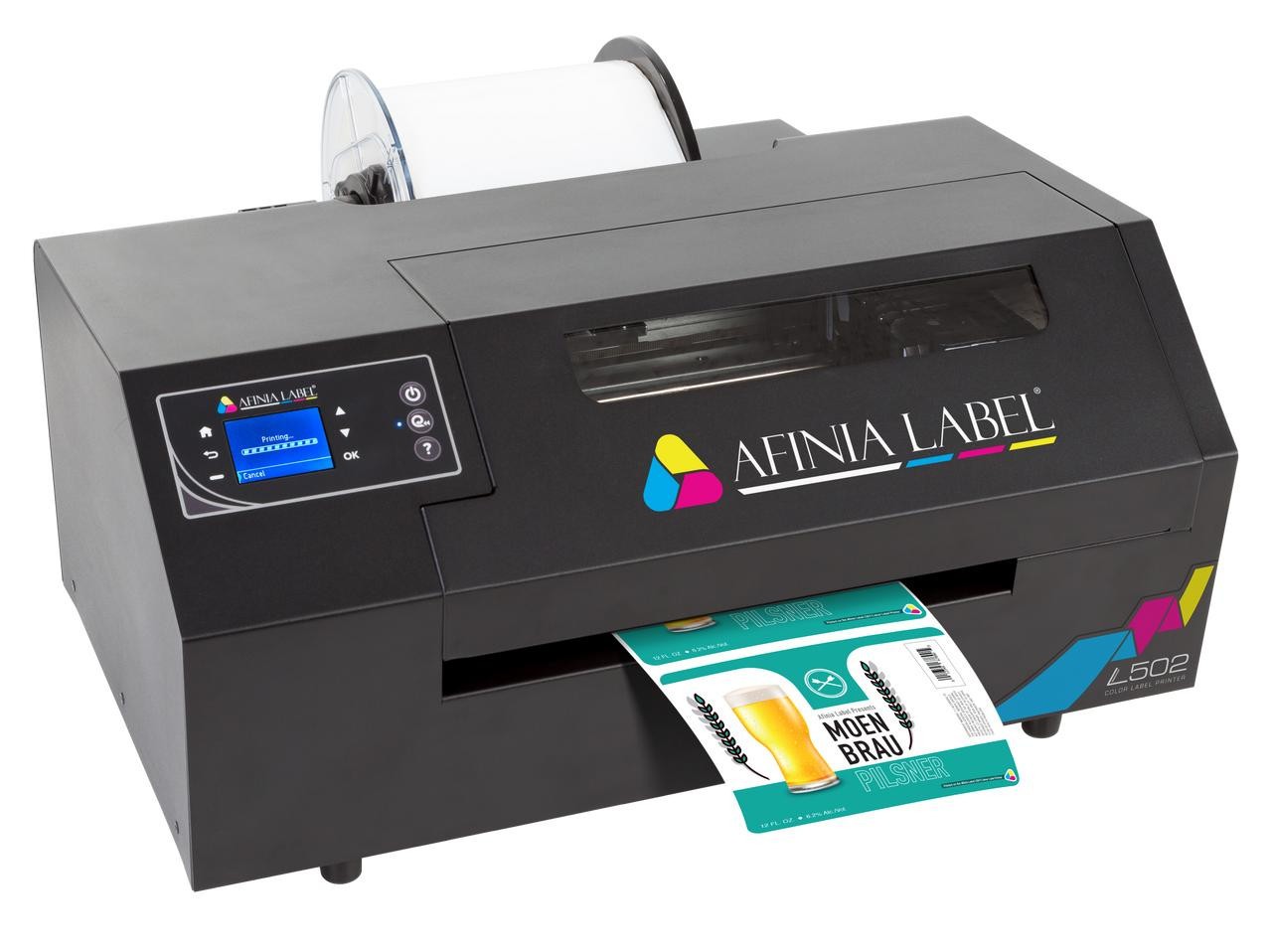
Best for: GHS-compliant labels, hazardous chemical containers, and waterproof/wear-resistant warning labels.
The Afinia L502 is an inkjet-based color label printer explicitly built for rugged environments. It comes preconfigured with pigment-based CMYK inks that comply with BS5609, a marine durability standard. This means your labels won’t smear or degrade even after 90 days of saltwater immersion, a must for chemical packaging and international shipping.
Key Technical Features:
-
Print Method: Pigment Inkjet
-
Print Resolution: 4800 dpi (photo-quality detail)
-
Print Speed: 5.2 ips
-
Print Width: Up to 8.5 inches
-
Ink Type: Separate CMYK cartridges with pigment ink
-
Certification: BS5609-compliant for GHS labeling
Why It’s Ideal for Product Warning Labels?
-
Perfect for hazardous materials, drum labels, and compliance packaging that faces moisture or abrasion.
-
Built with all-steel construction, making it highly durable in industrial settings.
-
Offers DuraPrime™ Duo Ink Technology, allowing you to switch to dye inks later for marketing labels, dual-use flexibility in one device.
Pair this printer with BS5609-certified blank label rolls (available at OmegaBrand), and you’ve got a turnkey solution for GHS-compliant warning labels.
3. Afinia LT5C Color Label Printer
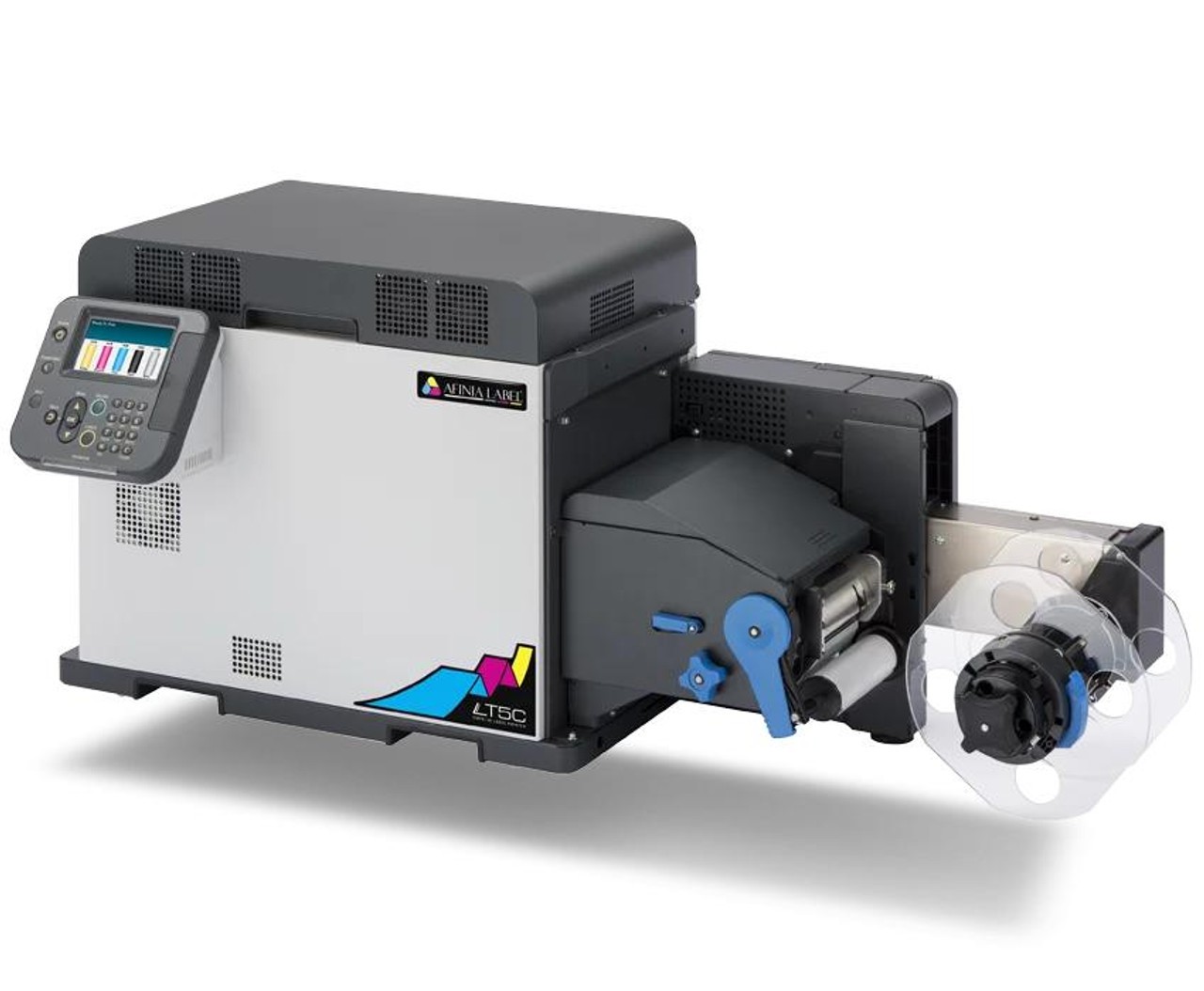
Best for: Premium or specialty warning labels printed on dark, metallic, or transparent substrates.
The Afinia LT5C stands out as the only desktop label printer with white toner support, allowing for full-color labels on clear, black, or foil surfaces, something traditional inkjets and pigment printers can’t do. If you’re creating attention-grabbing product warning labels for luxury goods or industries that demand visual impact, this is the ideal choice.
Key Technical Features:
-
Print Method: Dry Toner Laser (CMYK + White)
-
Print Resolution: Up to 1200 x 1200 dpi
-
Print Speed: 6 ips
-
Print Width: Up to 5 inches
-
Substrate Support: Vinyl, BOPP, polyester, explicit materials
-
Design Tools: Compatible with PDF cut files and vector workflows
Why It’s Ideal for Product Warning Labels?
-
White toner allows you to print on dark or clear labels, increasing legibility and compliance.
-
Scratch, water, and UV-resistant output, ideal for cosmetics, supplements, beverages, and chemicals.
-
Works well for industries that require branding + compliance, such as personal care products with allergen warnings or premium food and drink packaging with handling instructions.
It’s not just a printer, it’s a branding + regulatory powerhouse that offers professional-quality labels right from your desktop.
4. Primera LX4000 Color Label Printer With Pigment Inks
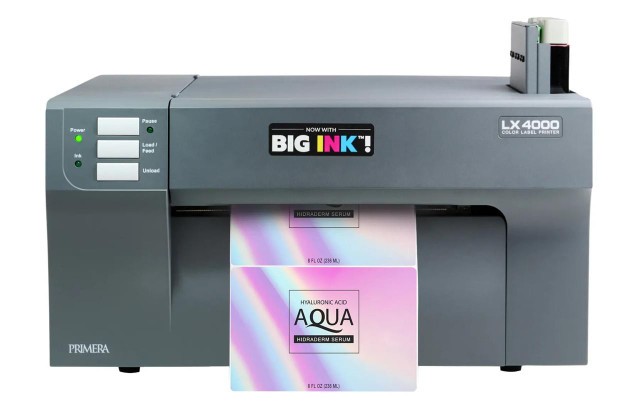
Best for: Long-lasting product warning labels with exceptional print quality and GHS-level durability.
The Primera LX4000 combines pigment-based ink with a high-resolution 4800 dpi printhead, making it one of the most versatile color label printers for both warning and product labels. Its pigment ink formulation ensures that labels are smudge-proof, waterproof, and UV-resistant, ideal for extended shelf life or exposure to harsh environments.
Key Technical Features:
-
Print Method: Pigment Inkjet
-
Print Resolution: 4800 dpi
-
Print Speed: 4.5 ips
-
Print Width: Up to 8.25 inches
-
Ink Type: Large-capacity pigment ink tanks
Why It’s Ideal for Product Warning Labels?
-
Produces compliance-ready labels with rich color and sharp detail.
-
Excellent for applications needing GHS, OSHA, or FDA warning labels that won’t degrade over time.
-
Wide format (8.25") allows you to design multilingual or icon-heavy labels on a single print run.
Whether you're labeling cleaning supplies, industrial components, or regulated food items, the LX4000 ensures you get crisp, compliant, and cost-effective results.
Ready to Print Compliant Labels That Last? OmegaBrand Has You Covered
When it comes to high-quality, regulation-ready product warning labels, OmegaBrand is your one-stop solution. From BS5609-certified label materials to OSHA- and GHS-compliant printers, we offer everything you need to stay safe, legal, and efficient.
-
Top-of-the-line printers from Brother, Afinia, and Primera
-
Industrial-grade ribbons, inks, and blank label rolls
-
Expert support for label compliance and setup
-
Fast shipping across the USA and Canada
-
Competitive pricing for small businesses and enterprises alike
Whether you’re labeling hazardous materials, cosmetics, supplements, or machinery, we ensure your labels are durable, compliant, and built to perform.
Shop now at OmegaBrand and take control of your product labeling workflow today!
Conclusion
Product warning labels are more than stickers; they're vital safety tools that protect your family and ensure manufacturers meet legal standards. Whether you're handling cleaning chemicals, electronics, or food products, reading and respecting these labels can prevent harm and promote safer everyday choices. By using compliant printers and adhering to the latest OSHA, ISO, and GHS requirements, businesses can create effective, durable safety labels that build trust and ensure regulatory peace of mind.
Frequently Asked Questions:
What should I do if a product’s warning label is missing or unreadable?
If a warning label is missing or unreadable, stop using the product immediately. Check the manufacturer’s website or email customer support for hazard information. Report concerns to the CPSC or relevant authority to ensure that safety label requirements and the use of safety symbols are met.
What are the consequences for manufacturers who don’t include proper warning labels?
Manufacturers who fail to meet label requirements may face fines, product recalls, or legal action under OSHA, ISO, or federal law. Missing safety labels or hazard information can result in serious injuries, especially with machinery, chemicals, or regulated goods.
Are all warning labels legally required in the United States?
Not all product warning labels are mandatory, but many are governed by OSHA, FDA, or CPSC standards. Labels must include accurate hazard information and the use of safety symbols when applicable. Requirements vary by industry, especially in chemicals, food, and industrial equipment.

